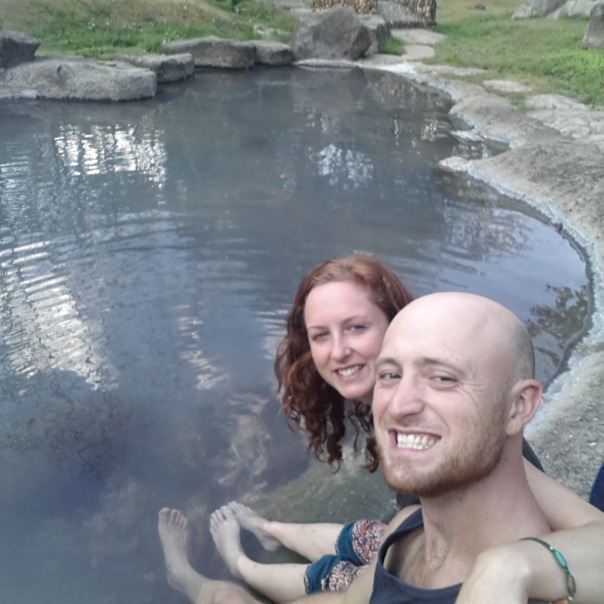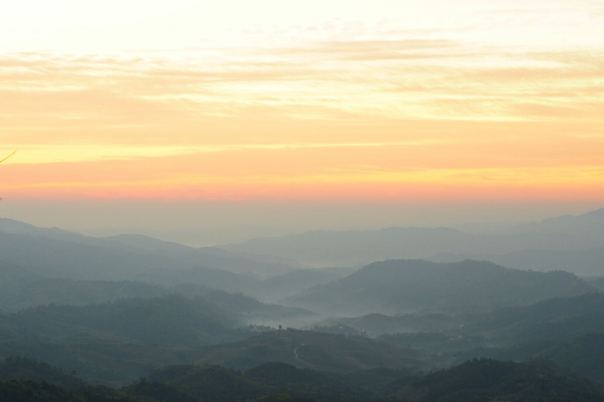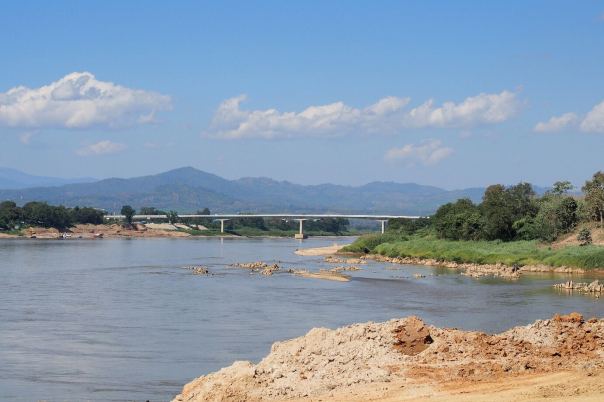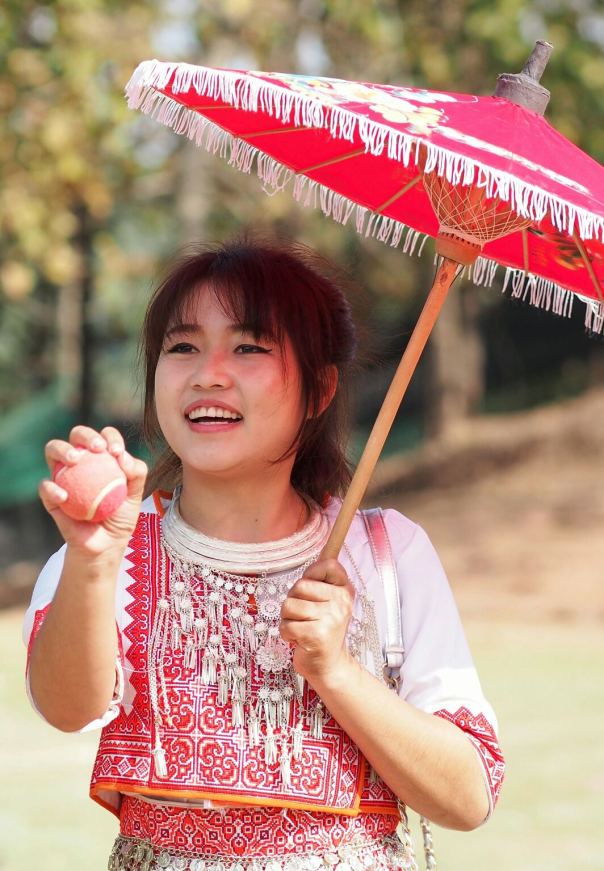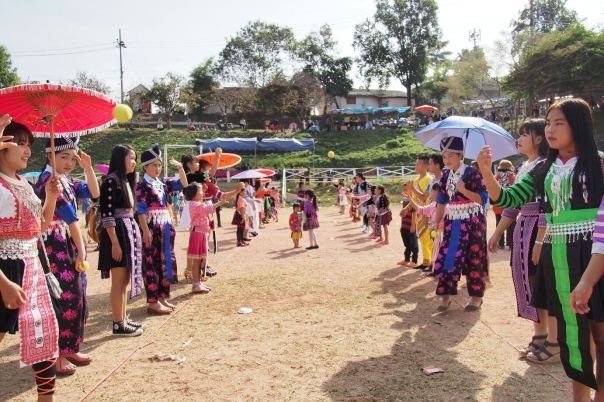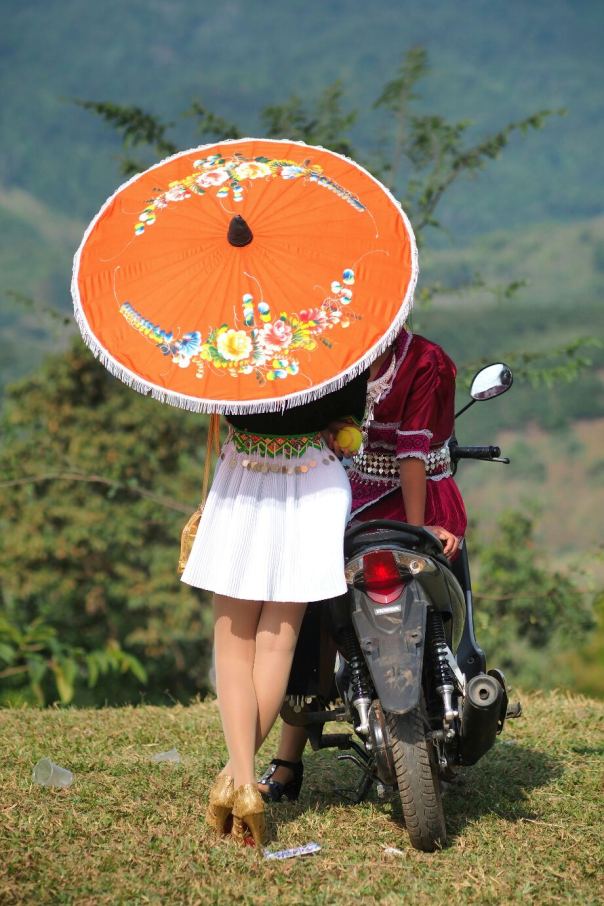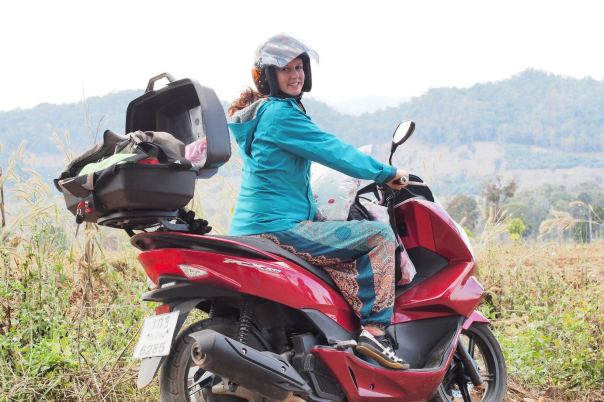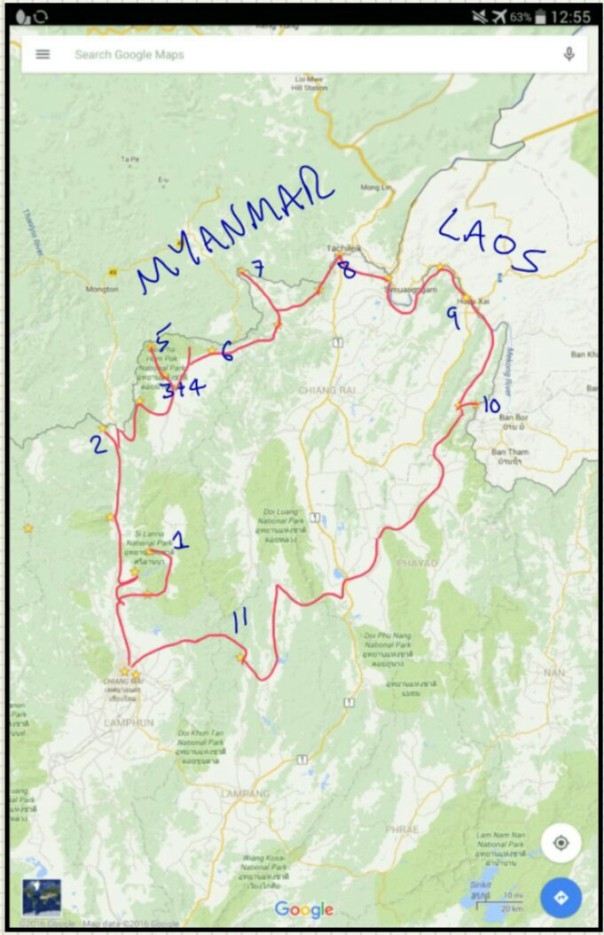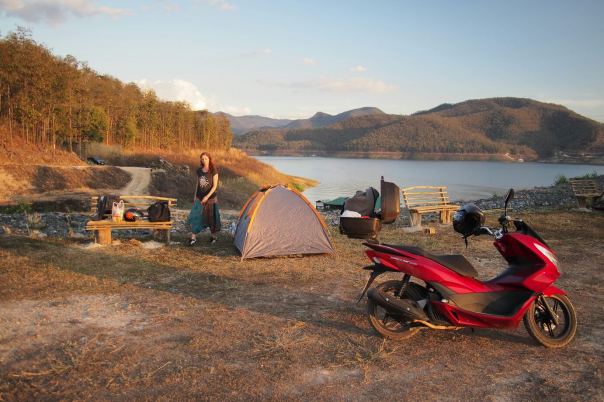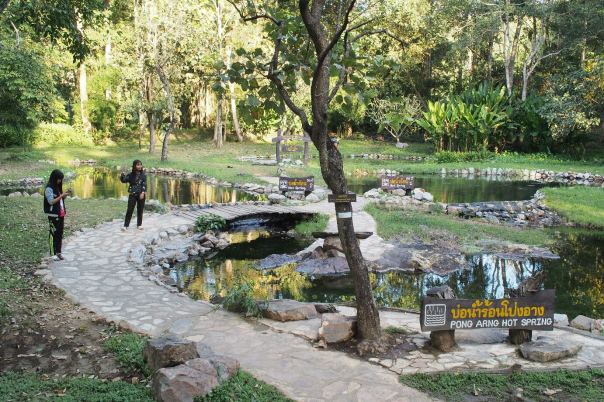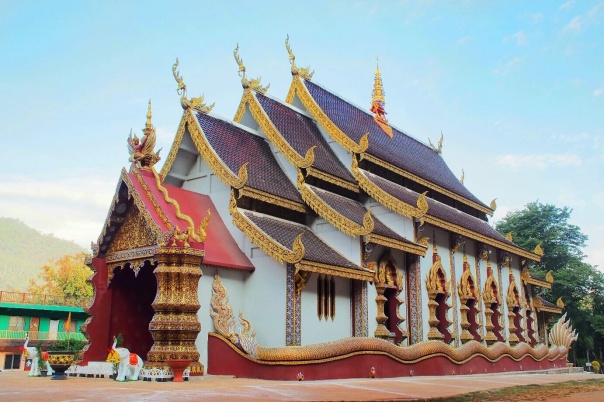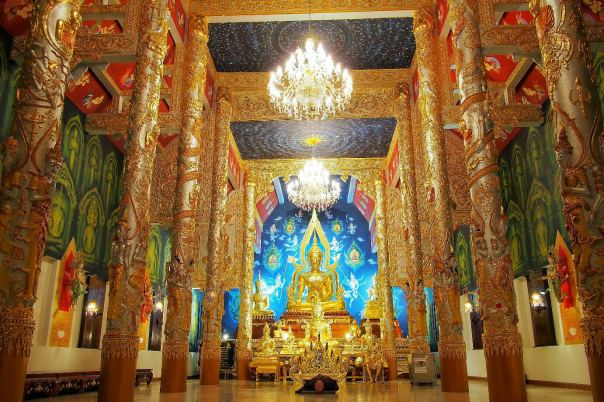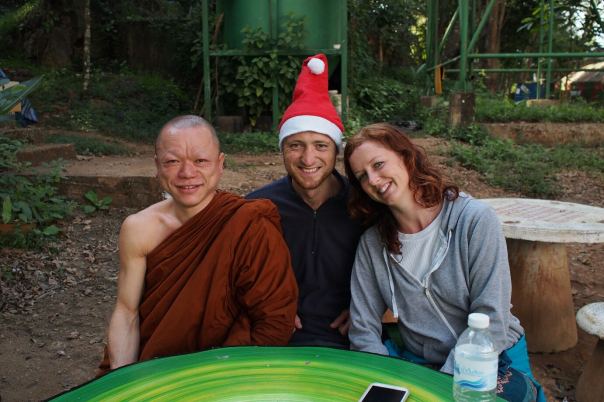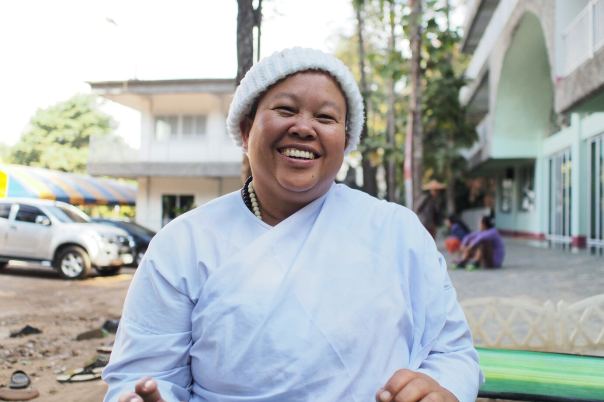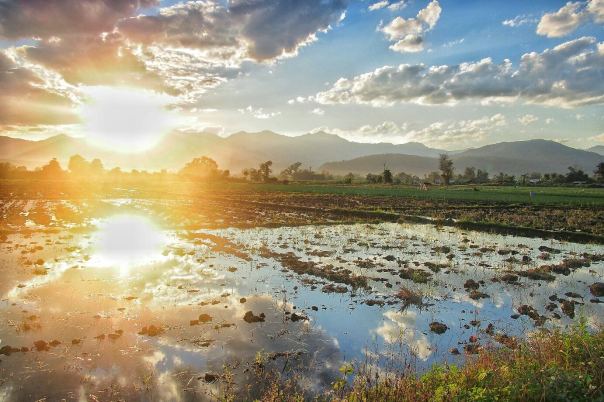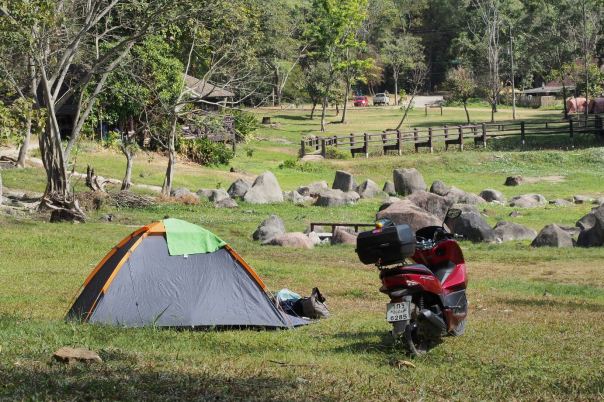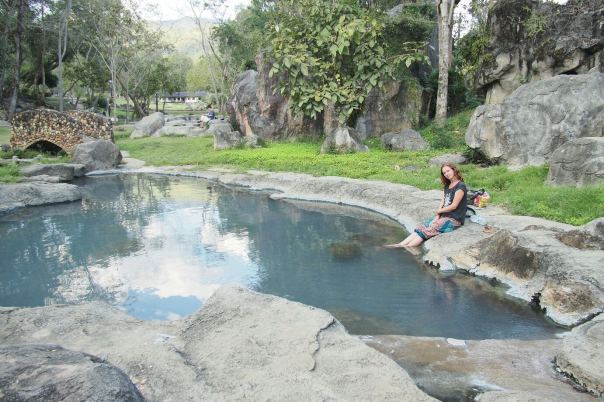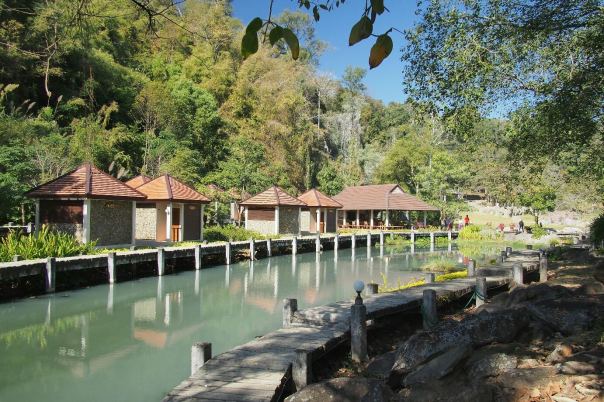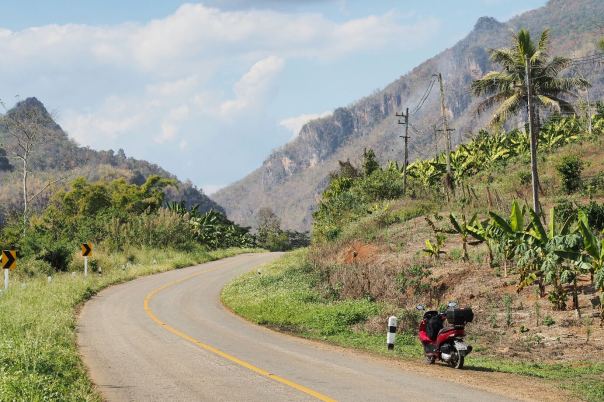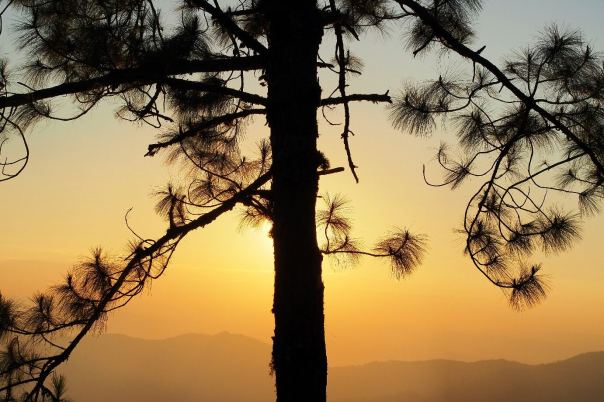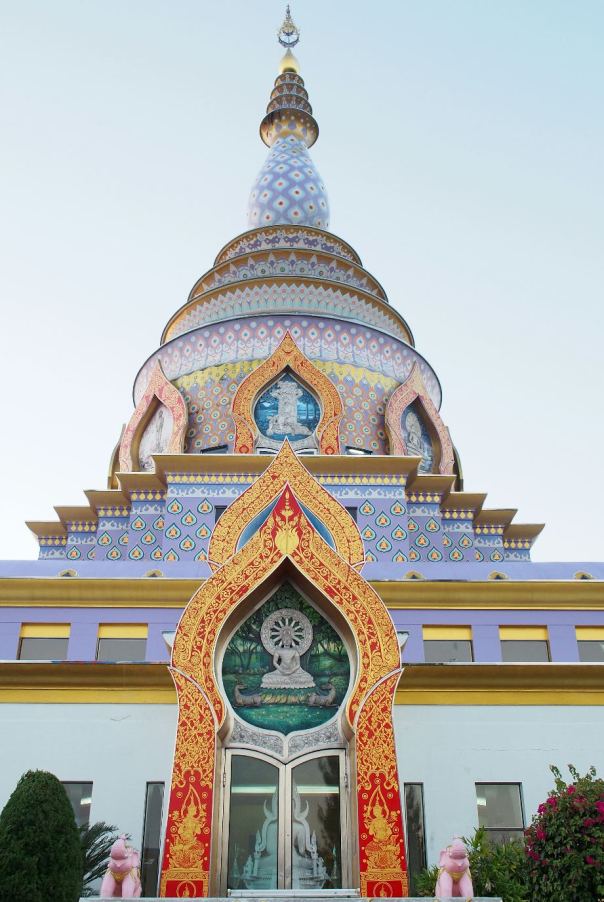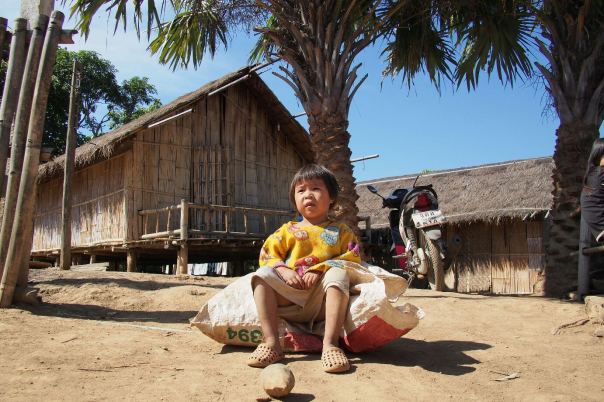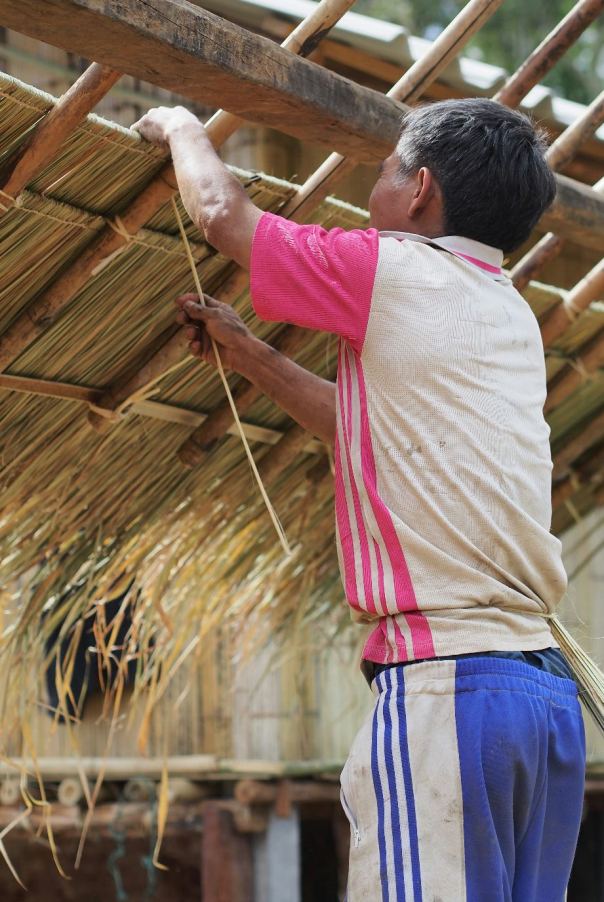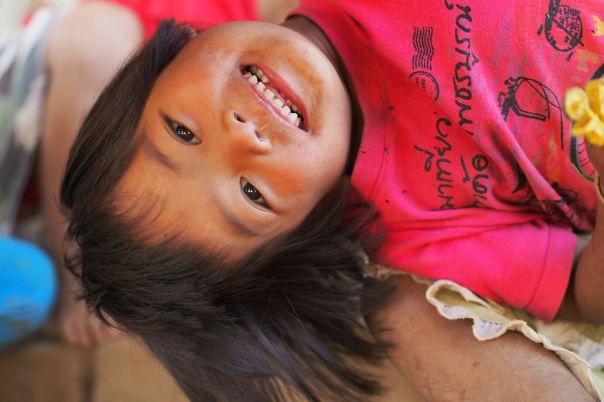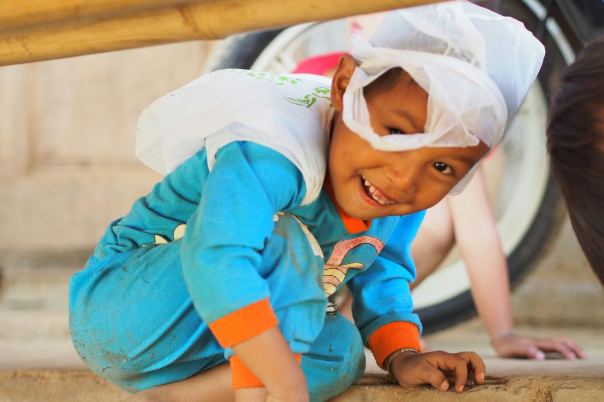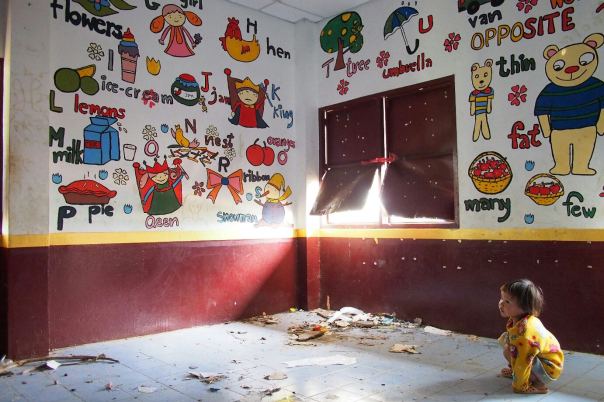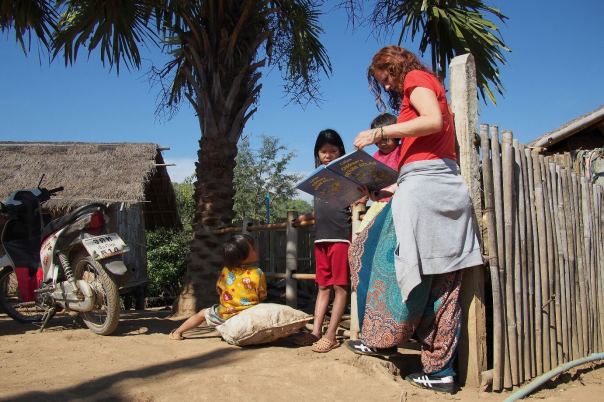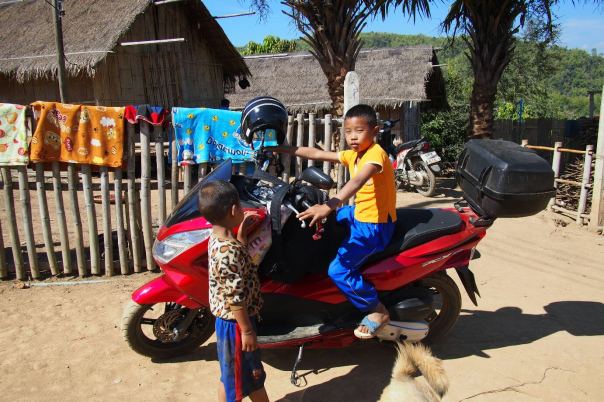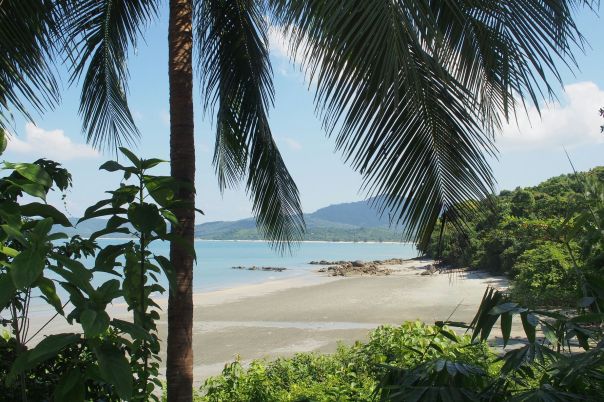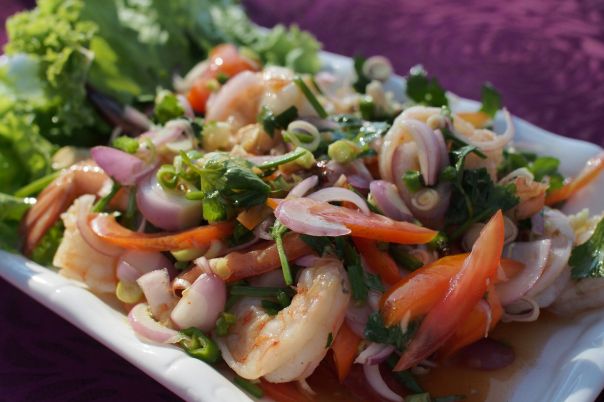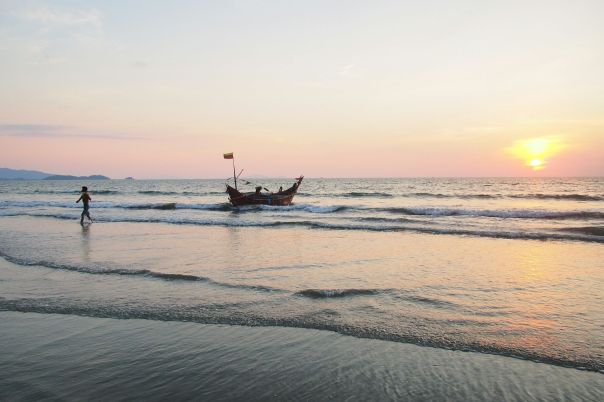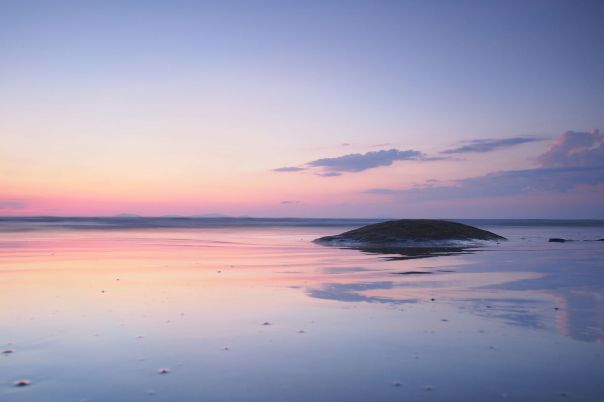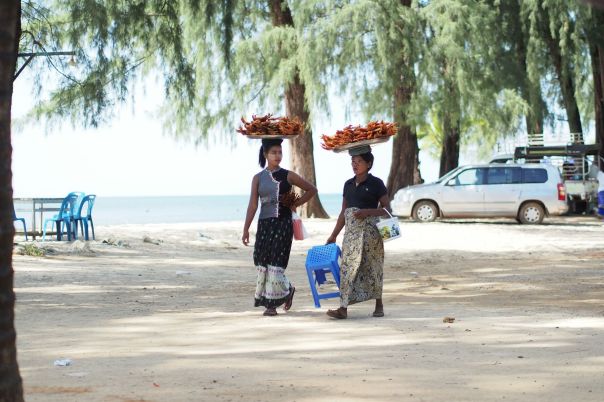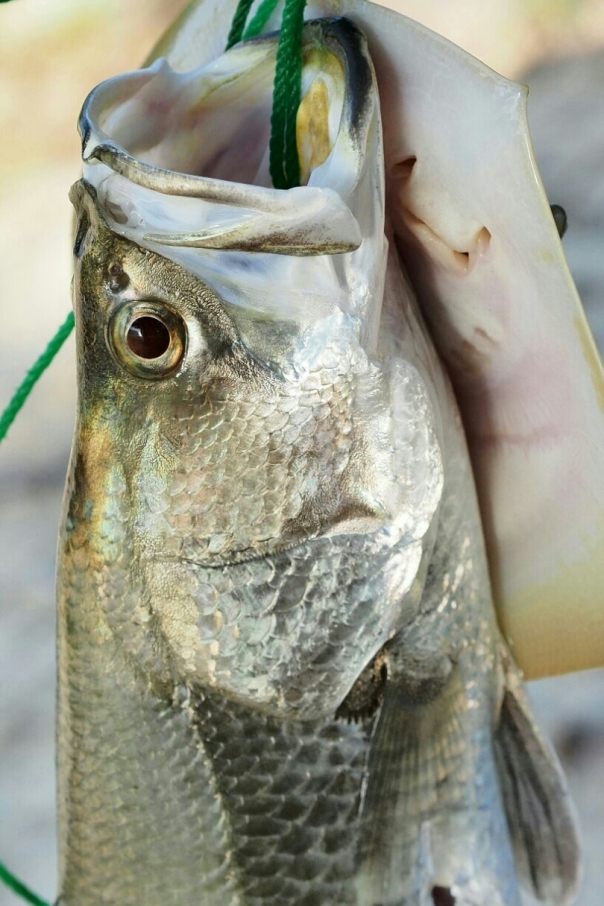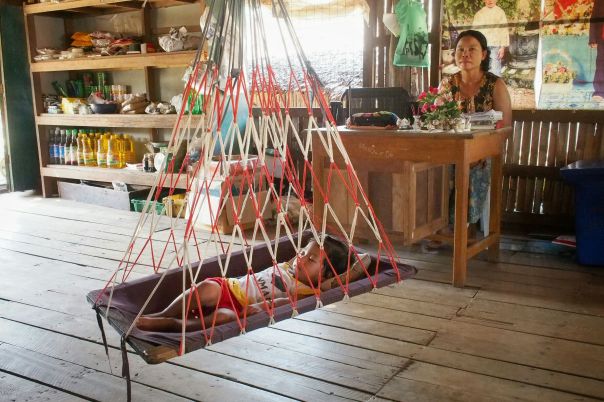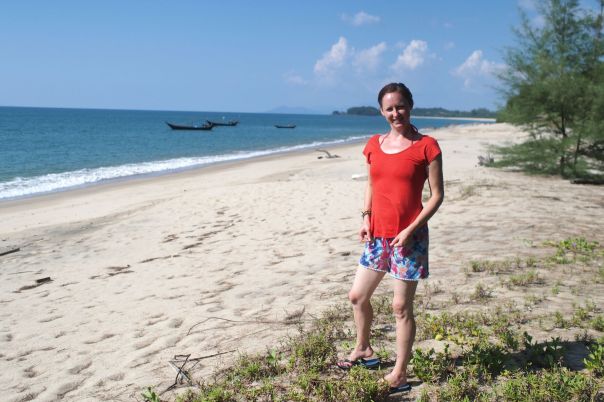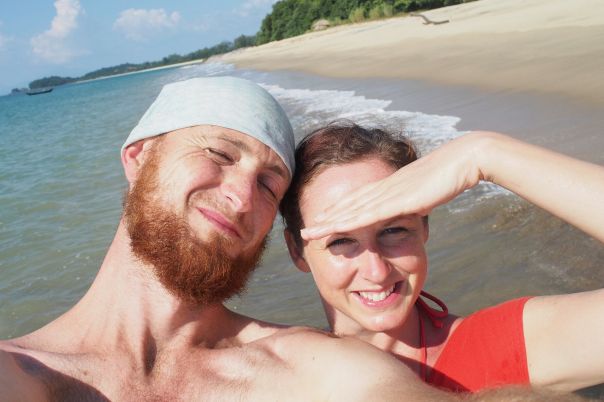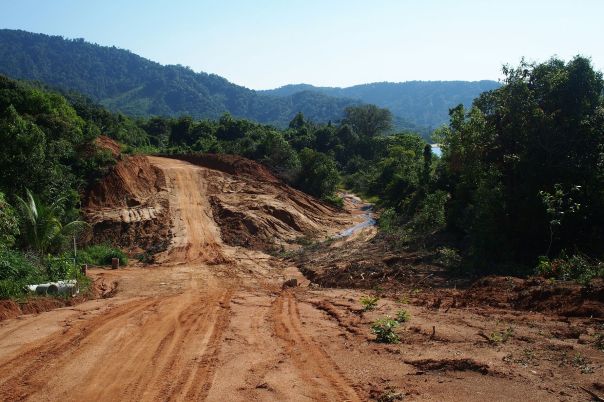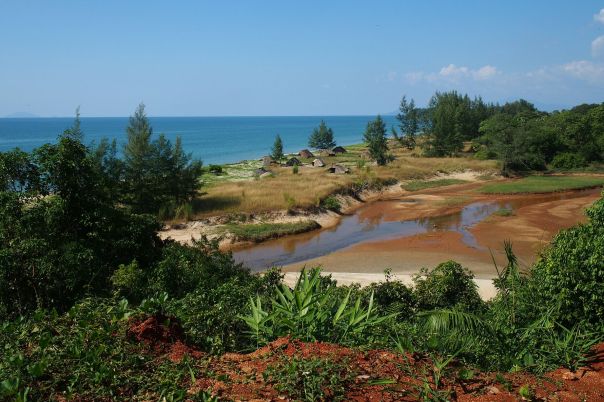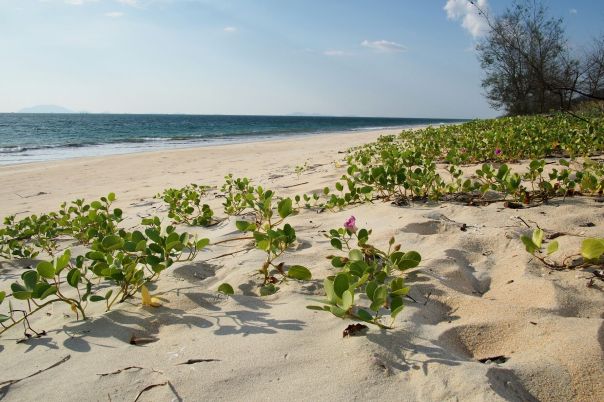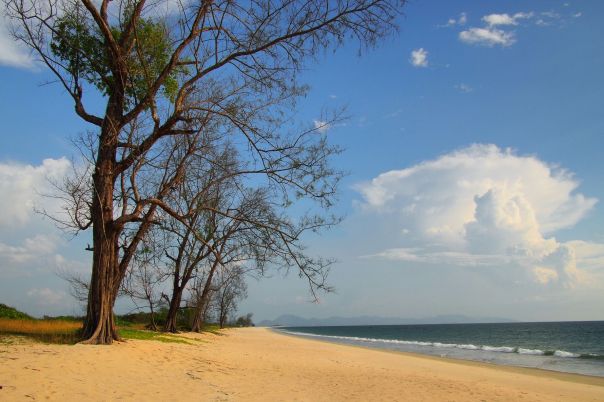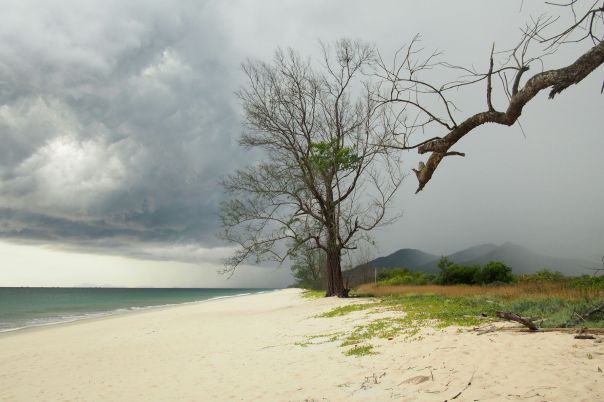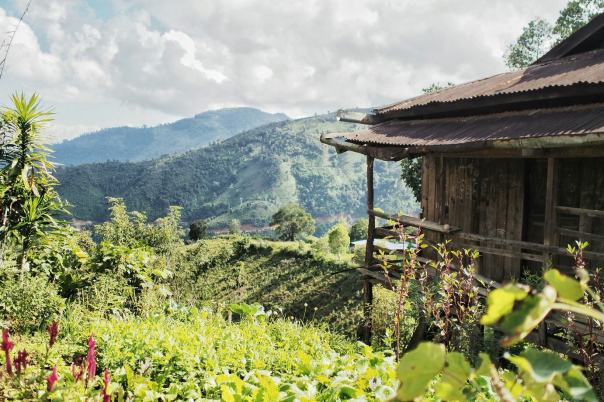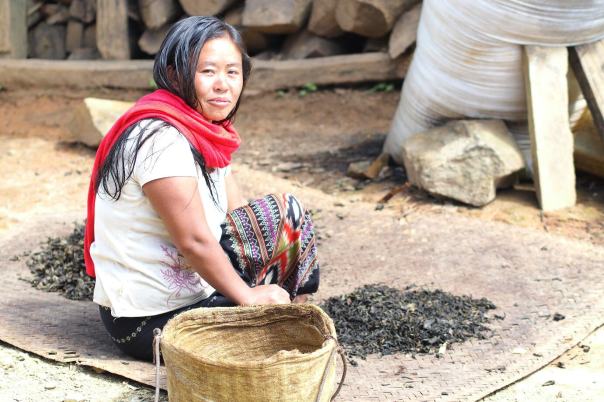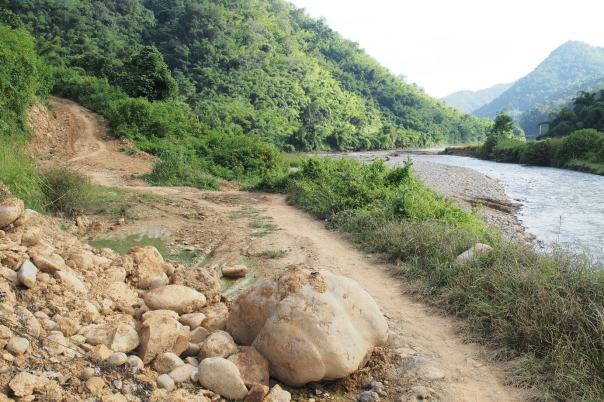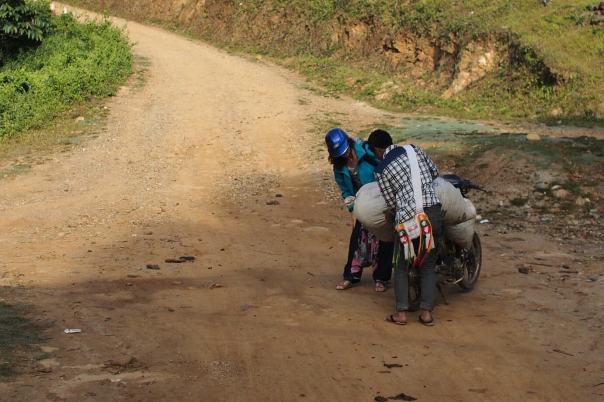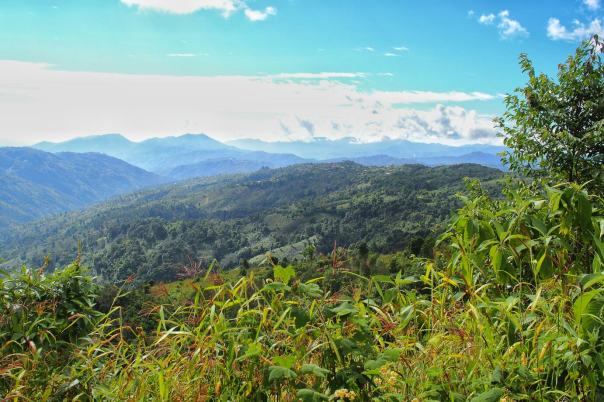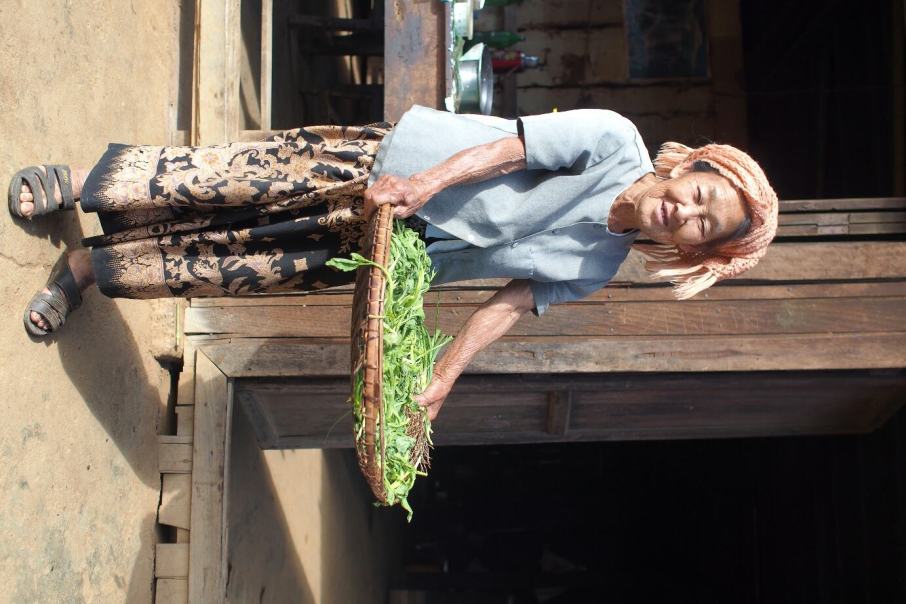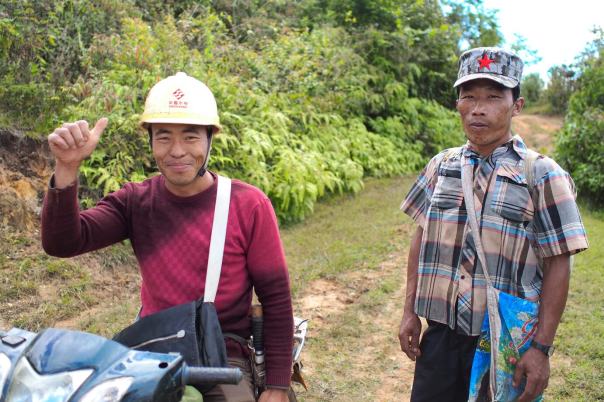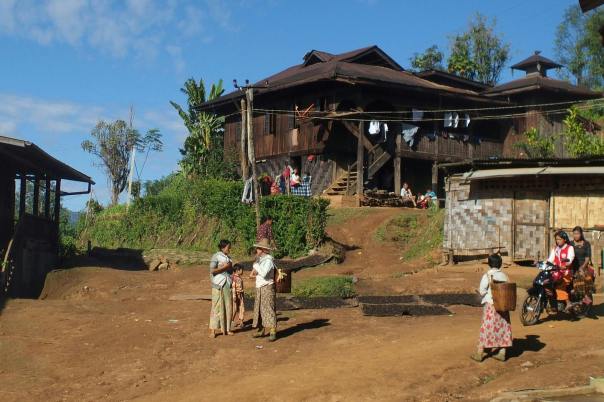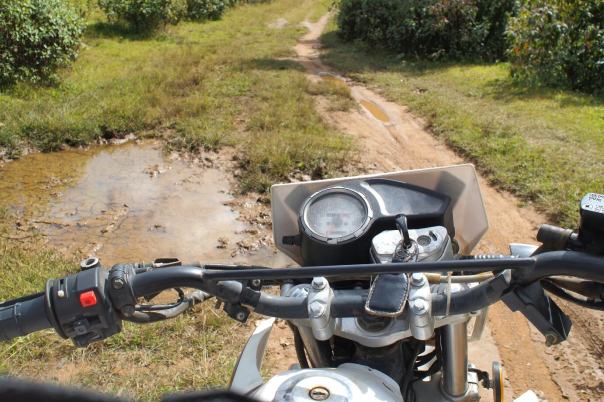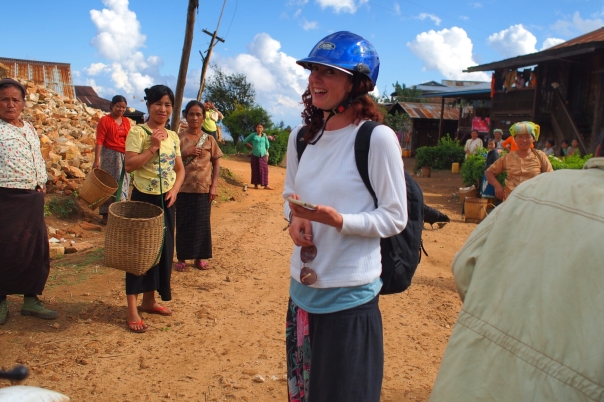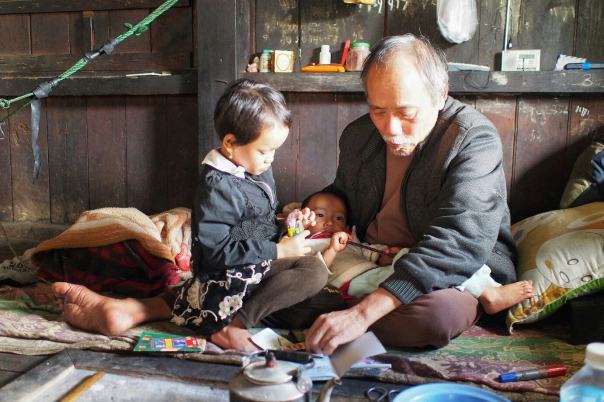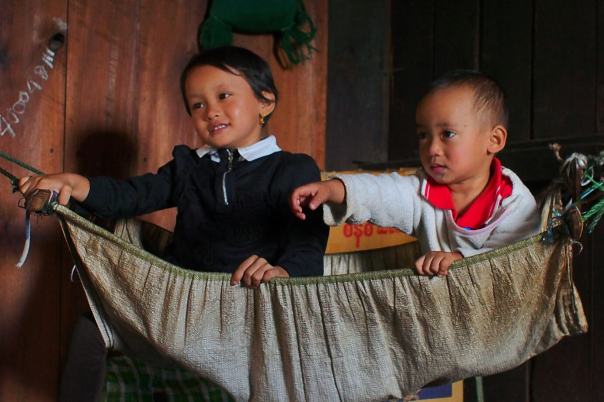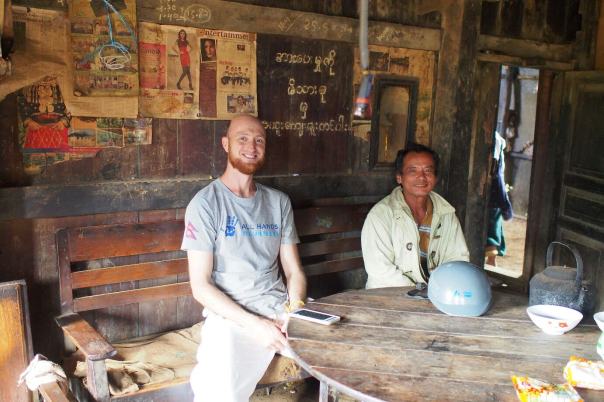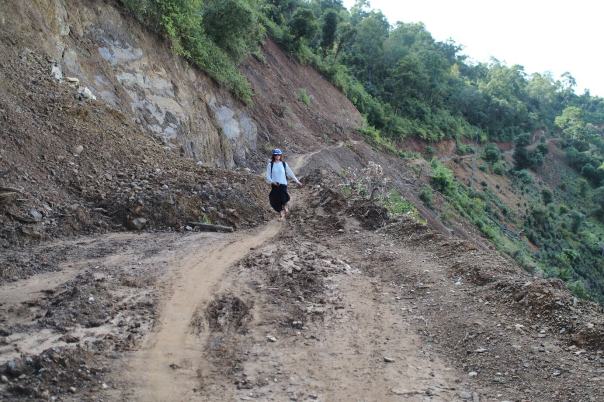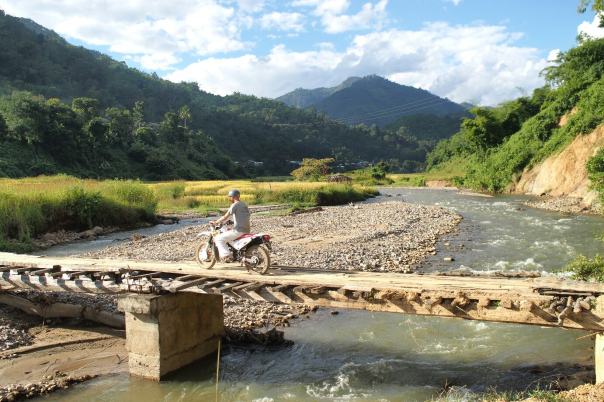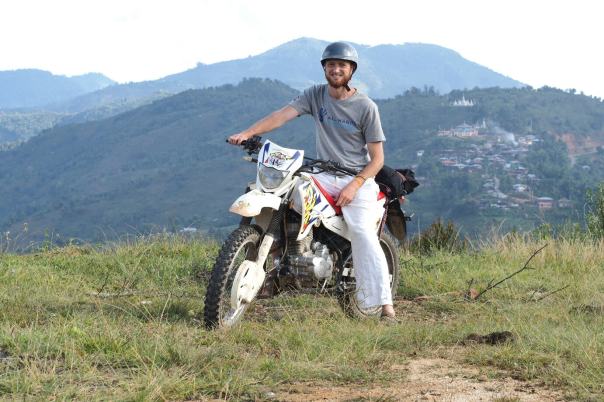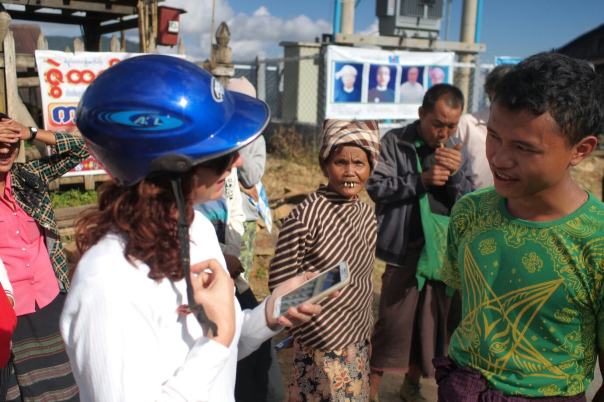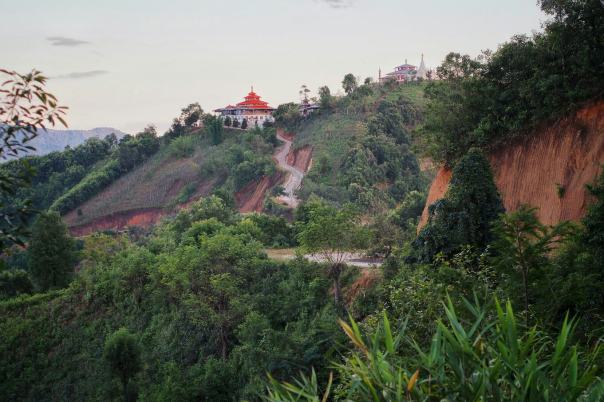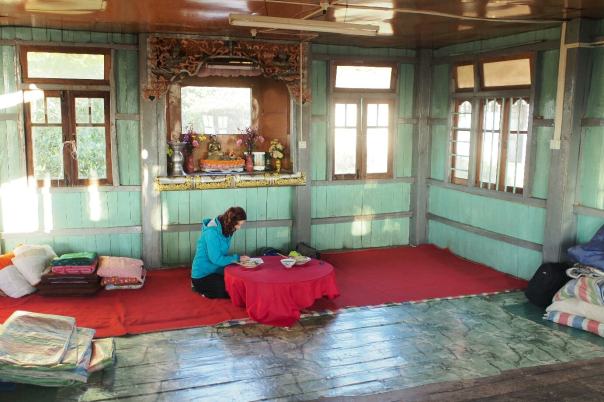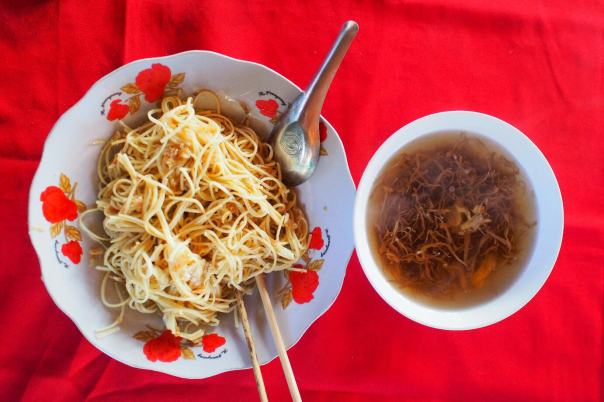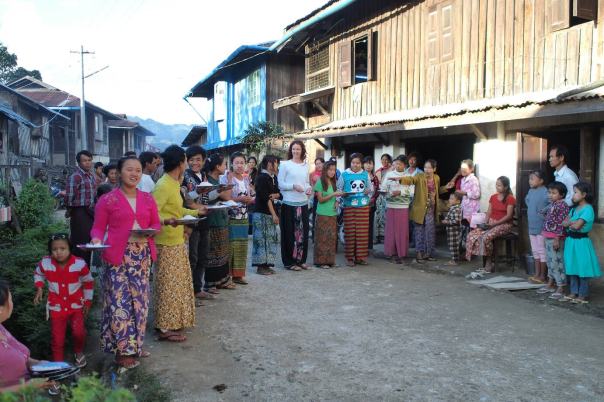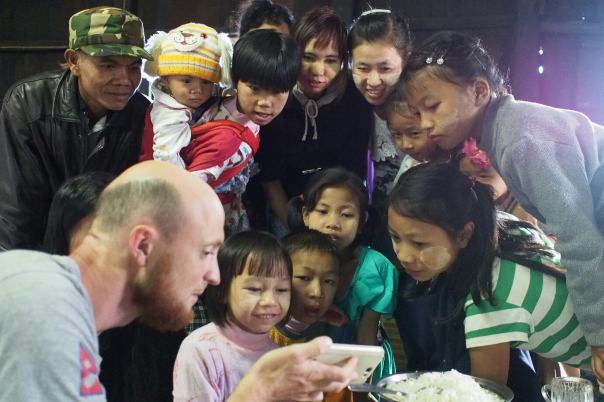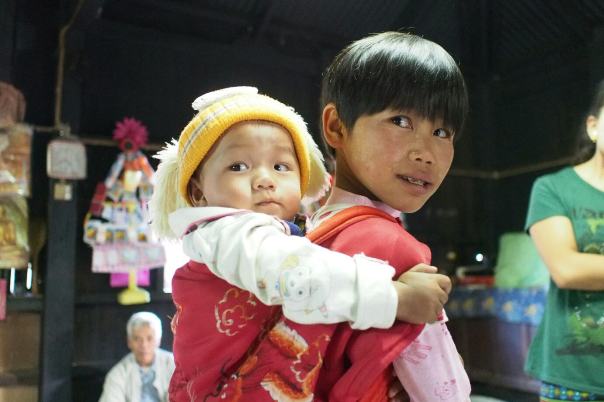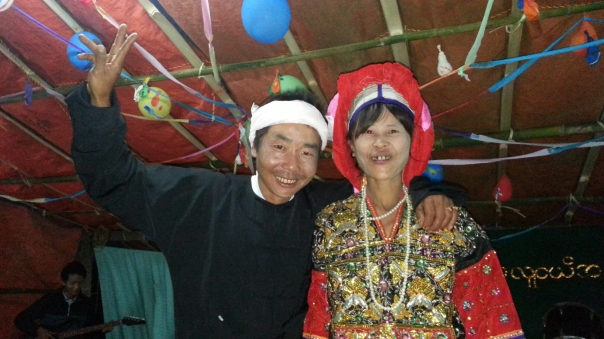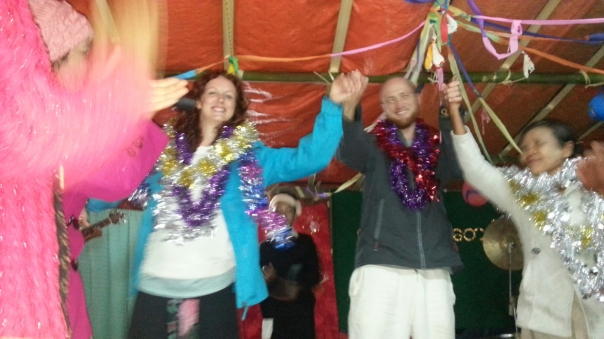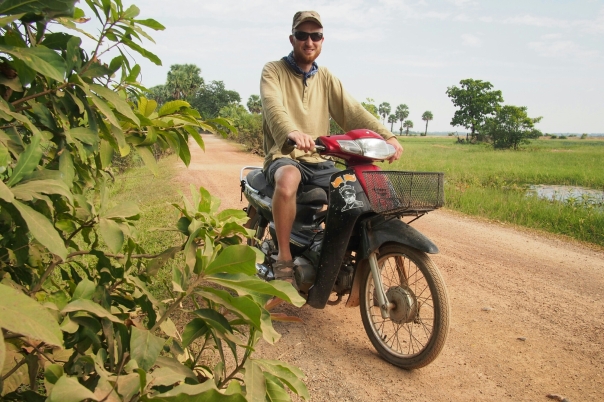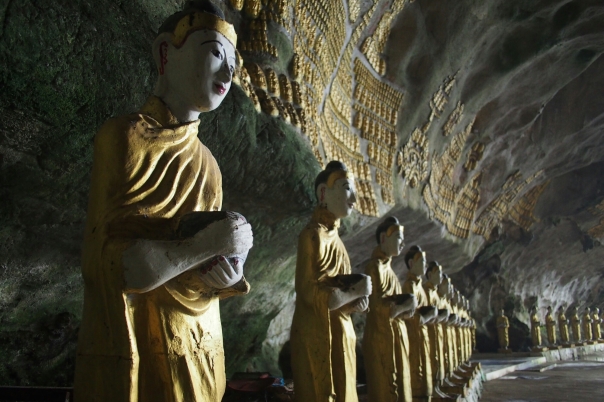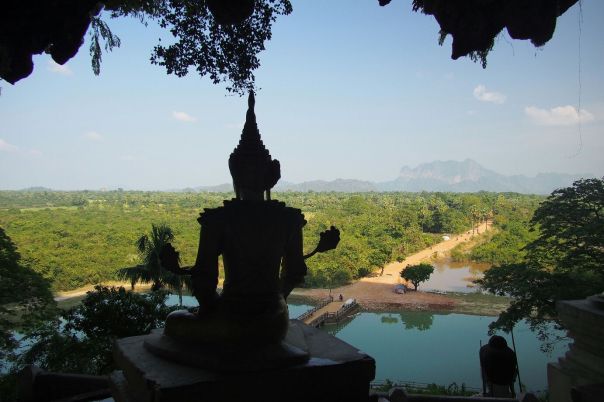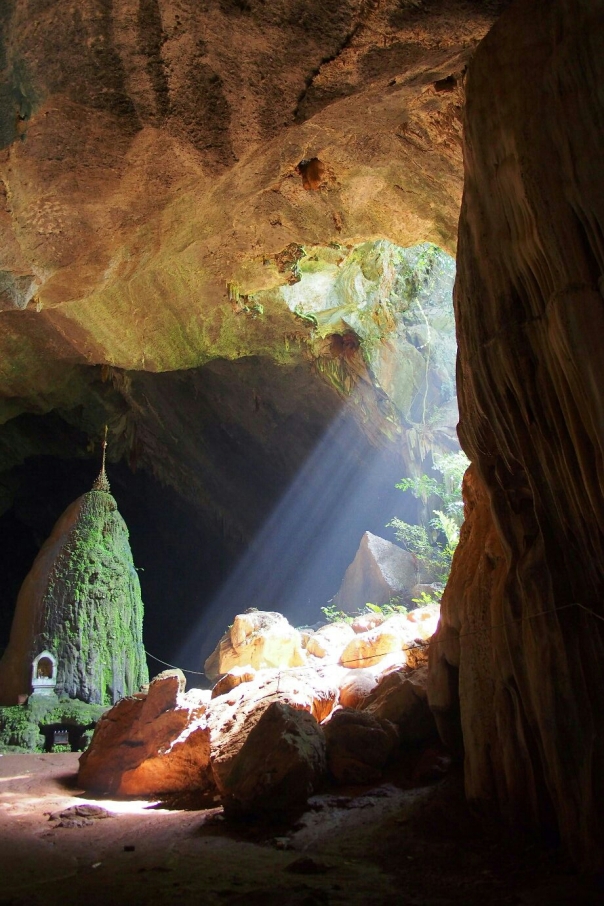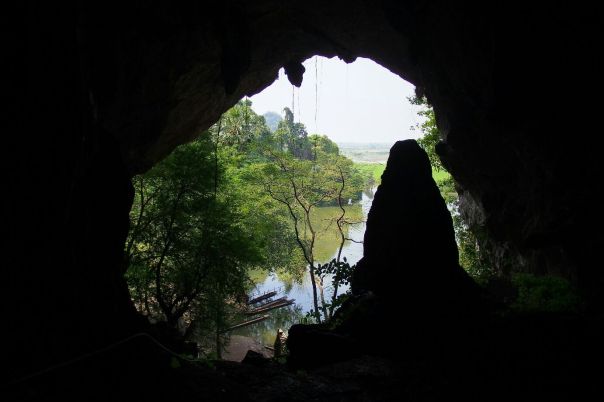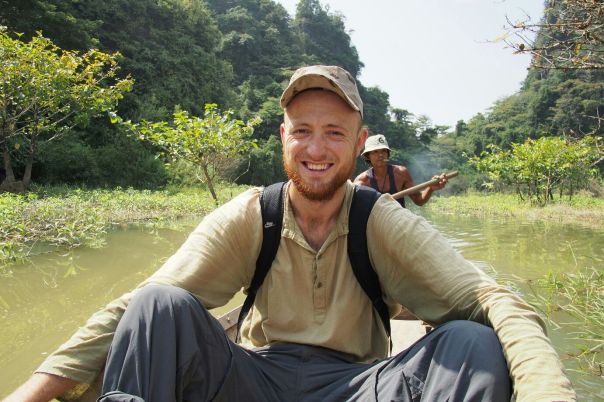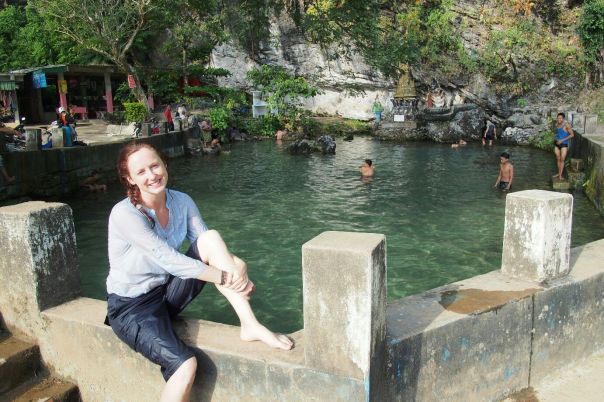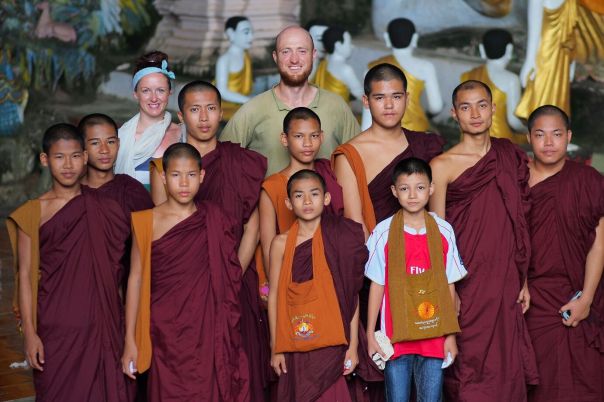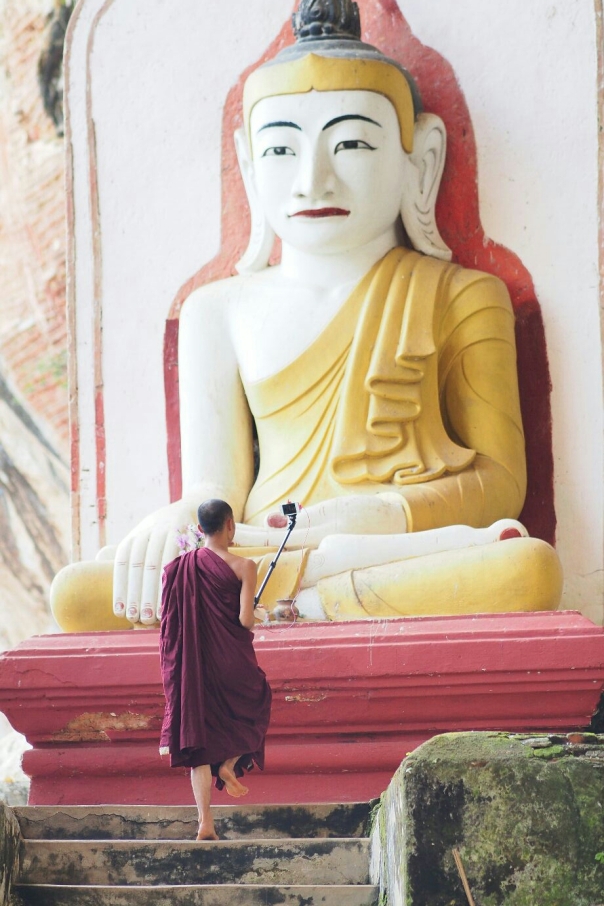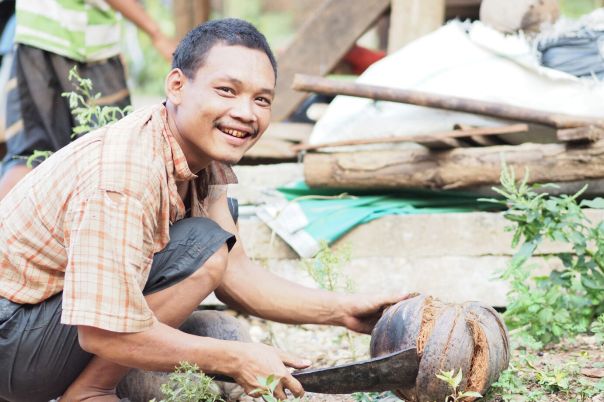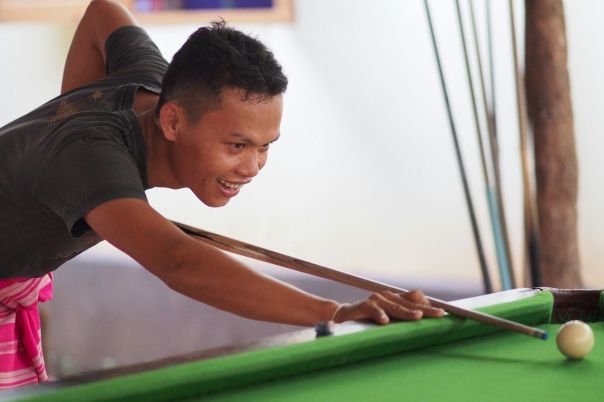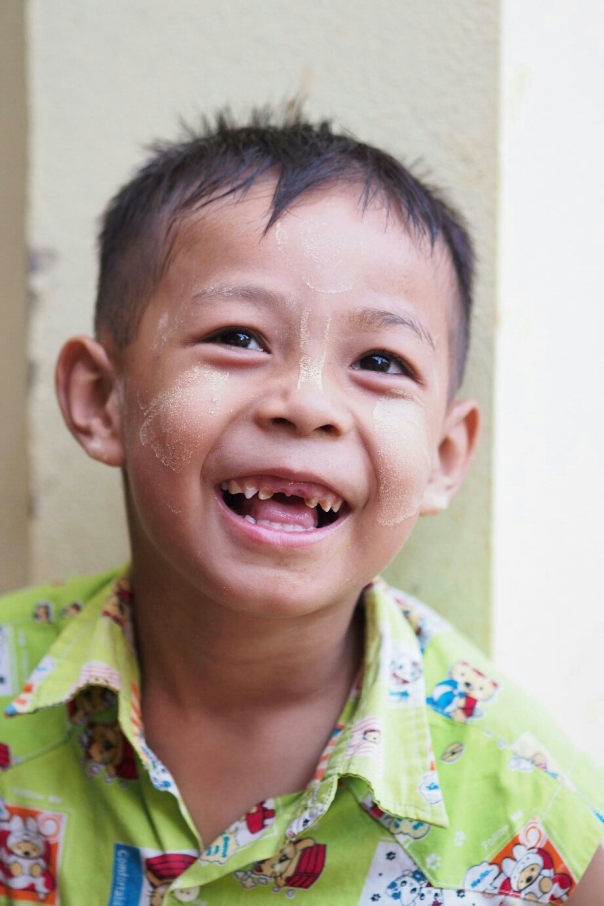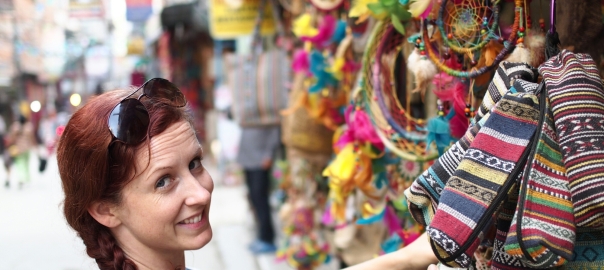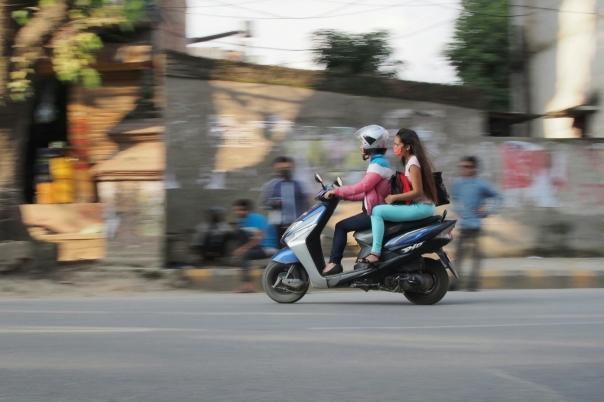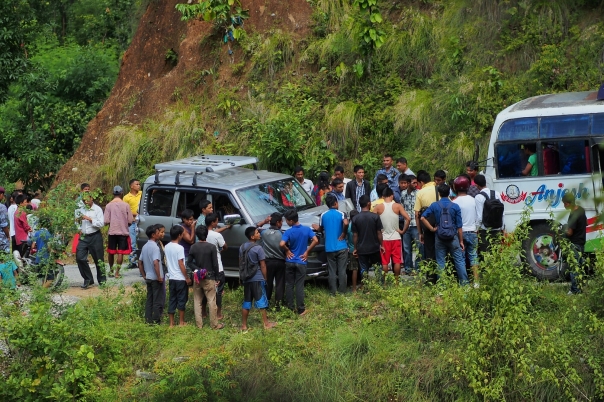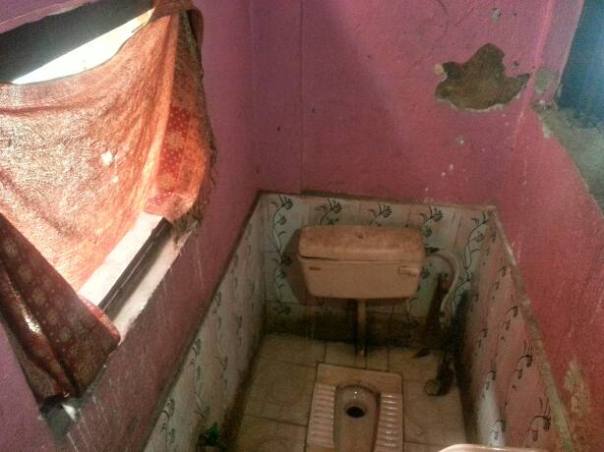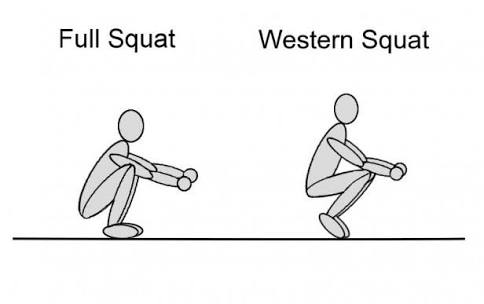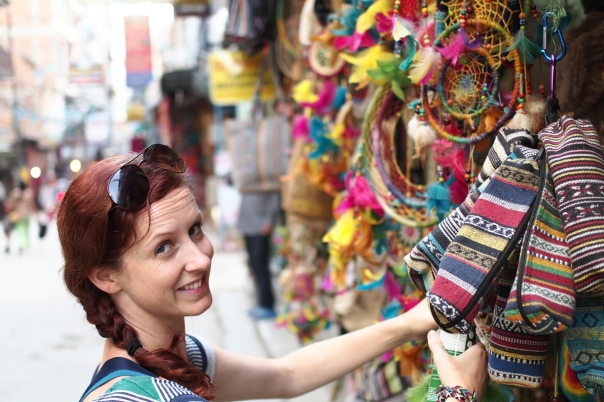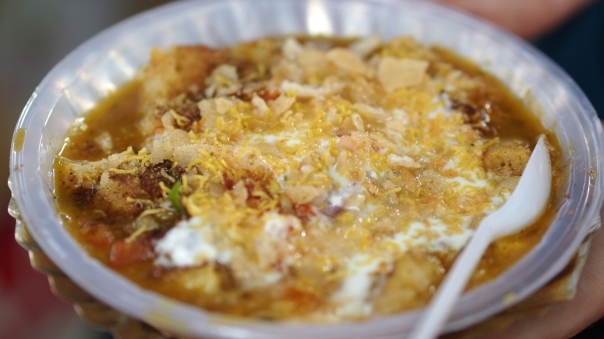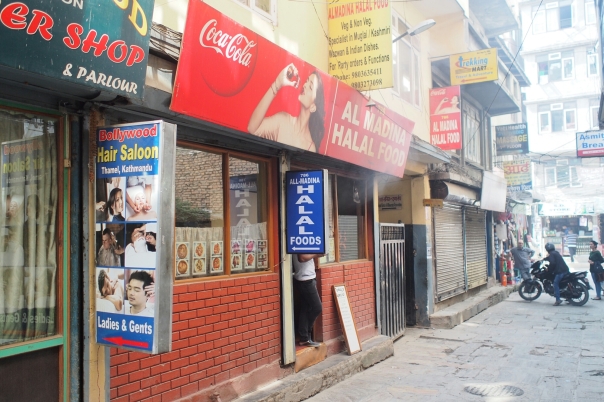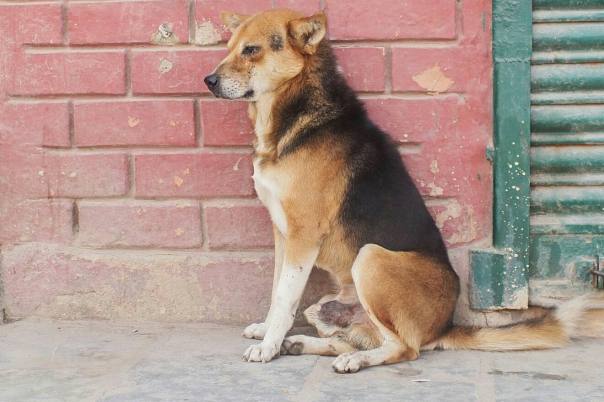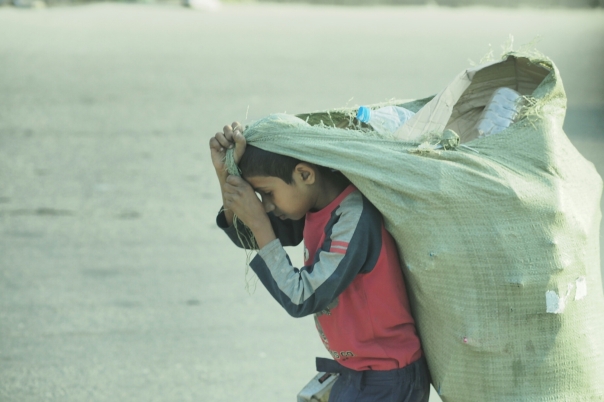“Borders, bathing and tennis balls…”
(Written by Steph, photos by Nick)
Day 7/evening:
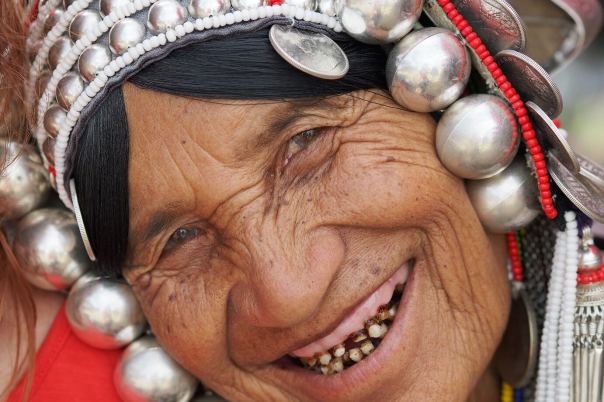
That evening we headed up a detour road simply marked “adventure time!” on the map sent to Nick by his friend, Chris. We had no idea what this meant, but were unsurprised to find yet more steep dirt tracks leading the way. We rocked up to be greated by one lone man…who didn’t speak English. The strange expression on his face would have had us believe there was no accommodation, but as luck would have it, a few minutes later a few Thai people showed up. Their first question: “How did you know about this place?”. The fact was, we didn’t really. We weren’t even sure if this was where Chris had stayed or if any tourists ever ventured this way. But as sunset was only about an hour off, and with no monastery to fall back on this time, we were counting on this being a place to stay.
With the new Thai group standing in as translators, we were soon looking at our room for the night – a 6 bed dorm, cheap as chips, sleeping only us. Score. The group were even so sweet as to invite us to eat with them. Thai camping is a military operation, not least in terms of the cooking. Whole kitchens are transported just for one night in a tent – food really is at the centre of their social events.
However, we had some exploring to do – this place was not only special because of its remote location, it seemed that here you could quite likely do what we hadn’t succeeded in doing before – walk into Myanmar. As we started along a path leading into a forested area behind the accommodation, we looked on Google – only 1km from the border. Where was all the border control now, we wondered? Pressing on, we could see the blue dot moving nearer and nearer that line, the words of Chris echoing in my mind – be careful not to cross over to the wrong side. We weren’t sure exactly where he meant originally, but now we were here, it seemed this could be the very place – nowhere else had we found it remotely possible to get even this close. As dark was coming, and Myanmar militia groups were probably close by, we sensibly, for once, decided to heed Chris’s warning and head back to our digs. Still, after all the “no entry” roads we had encountered near the border, it was exhilarating to think we had got that close, unnoticed and unhindered.
Day 8:
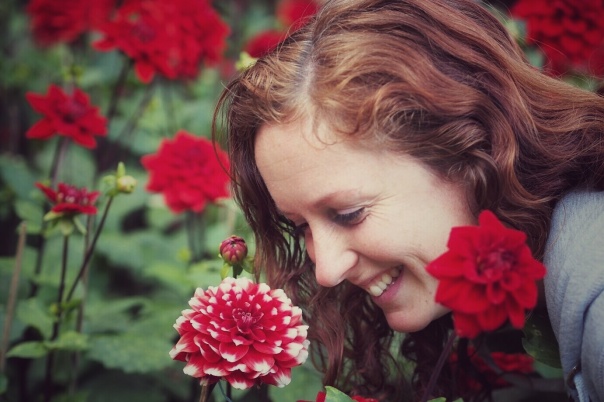
Day 9:
That’s not what we learnt in school…
It’s funny how perspective can change something as rudimentary as history. Reading a book about the Israel/Palestine conflict, I remembered an Israeli girl remarking that they didn’t know that Palestinians were chased out of their homes at gunpoint – the story that they were told at school involved the Palestinians running away and abandoning their homes like cowards. Sometimes white lies are easier to swallow. Except when it comes to history, the white lies are often very dirty. So imagine our interest, as two Brits, walking into the Hall of Opium Museum in Chiang Saen to hear history told from a non-British perspective. Our country was no longer a nation of heroes, but one that intentionally got China hooked on opium to further our own agenda, notably, facilitating our tea drinking. Apparently tea was a major expense to us and we had to find a way of funding our indulgence. Now, I’m all about the tea, but to discover the lengths we went to, and the manipulation involved, was quite the eye opener. We spent a good four hours in that museum and I don’t think we missed one placard.
“The Golden Triangle”
The afternoon of day 9 and we were nearly at the point after which this loop was coined – “The Golden Triangle”. On a map, this is the point where Thailand, Myanmar and Laos meet. In reality, this is an ugly tourist trap with a ghastly monument, some misplaced attempt to mark the significance of the place. We were aware that this might be the case, and yet, we felt compelled to stop and decide for ourselves. Nick even got me on a boat up the Mekong. Now that might sound idyllic, but I can promise you that it wasn’t. The surroundings were that of an industrial bomb site placed next to a murky brown river. I wasn’t sure what he was thinking, but I boarded the boat, contrary to my better judgement.
“Shopping time!”
Noisy engine propelling us forward, we looped around the casino – evidently constituting something of interest for a nation where gambling is illegal. The next thing we knew, we had pulled across on the Laos side to go “shopping”!! When the guy selling us the tickets had mentioned the word, we explicitly said we only wanted a boat ride. Just when we thought people coming to the boat to sell us things was bad enough, around the corner appeared an elephant giving rides with one of those brutal chairs on its back. That was it, we got the boat guy to take us straight back across the murky brown water where we promptly moved on.
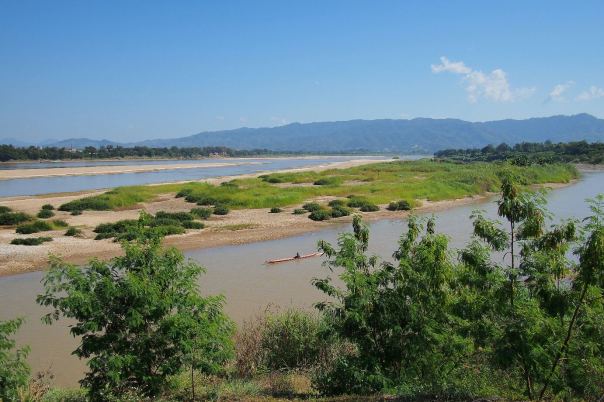
Luckily that wasn’t to be our only experience of the Mekong. Aiming for Chiang Kong, we had the most beautiful ride along a road that weaved alongside the river. The water was now much clearer in colour, although still not quite clean enough to tempt me in for a dip. Nick, on the other hand, was raring to go, and it wasn’t long before we found him a spot to fill his boots, or rather, dunk his toes. Either way, he was in, and he wasn’t the only one. Two young boys were also swimming and had a great time trying to copy Nick swimming upstream against the strong current. We had such fun with them, practising their few words of English, that after they left, I made Nick ride after them on the bike to give them something I had been carrying around since the beginning of our travels – a children’s picture atlas. It had served me well in terms of learning my Middle Eastern capitals, but it was never intended for me. I had brought it along hoping to find a new owner, and as these boys ran off with it and sat on the step of their house to eagerly flick through the pages, I knew that they had been a good choice.
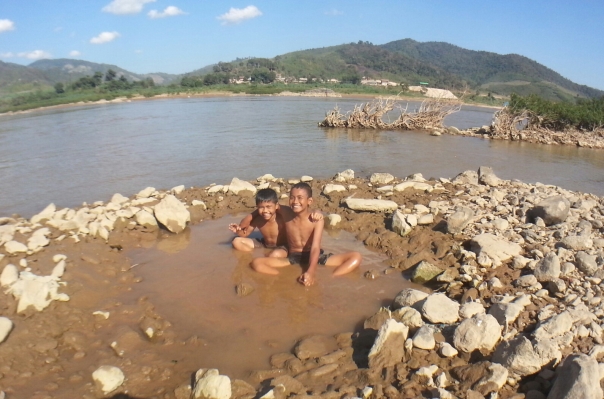
Day 10:
Accommodation along the Mekong road was far too expensive, so we had continued to Chiang Kong to sleep the night of the 9th. It was just such a beautiful bit of road, though, we decided to go back on ourselves this morning. Breakfasting looking out over the Mekong in the morning sunshine was a bit of pure bliss.
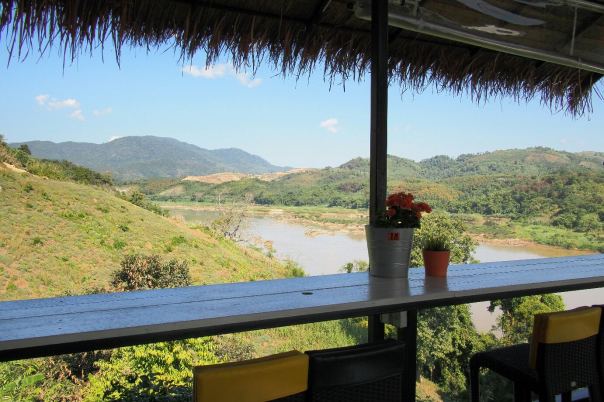
After a lazy few hours reading in our glorious location, we headed for Phu Chi Fa, where it was said you could look straight down into Laos from the border.
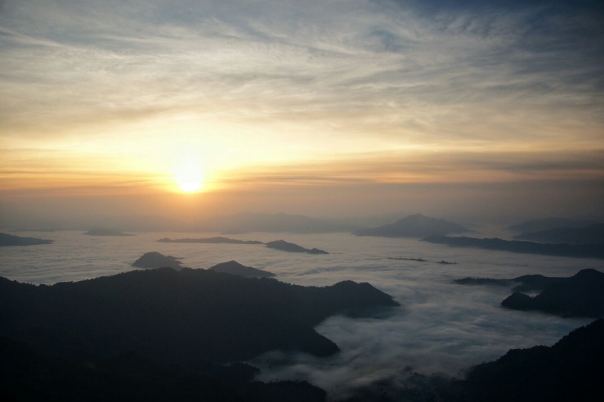
Day 11:
This time we did actually get up for sunrise. Us and the rest of the world. Certainly busier and more commercial than some of our stop offs, it was, none-the-less, quite beautiful. It was evidently a place for some of the Hmong people, who originated from China.
We were meant to be doing a long journey on the bike today, but we hadn’t got far from the viewpoint when we passed a street full of people wearing the most amazing outfits, and this time it didn’t appear to be about the tourists. Now quite used to being brazen, we got off the bike to go and see what was happening in the school playground where all these people were congregating. Unmoving in two lines, they were simply throwing tennis balls back and forth. And back. And forth. Perhaps Murray had an opening for a new ball boy.
Fruitlessly we tried to find out what it was all about. Perhaps we assumed that because we were near a tourist attraction that someone might speak a bit of English. Not a sausage. It wasn’t until some other Thai tourists came along that they managed to find out for us that this was a new year festival and the throwing/catching game was one that was traditionally carried out between girls and boys that like each other. Now that’s what I call a date.
Day 12:
